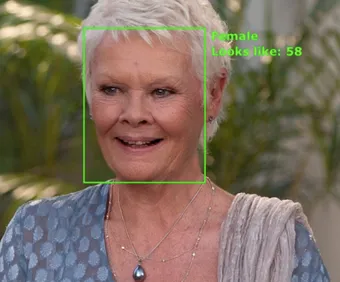AI and Age on Screen
Prof. Garde-Hansen, Link opens in a new windowCentre for Culture & Media Policy Studies & Dr. Tanaya GuhaLink opens in a new window, Department of Computer Science, March 2021
Researchers have repeatedly noted that women, the ageing population and minority groups are underrepresented in popular media across the world (YlanneLink opens in a new window 2012, Twigg & MartinLink opens in a new window 2015, DolanLink opens in a new window 2017, Marshall Link opens in a new window2018). Among this research, claims are made that age-based discrimination and stereotyping reflect and contribute to a range of ageist behaviour in European society (Carrigan and Szmigin 2000) and connections are made to media representation as an influencing cultural factor. It is well documented in the literature that Film and Television industries have (for a range of reasons) restricted the ageing female on screen to the ‘lavender ladies’, ‘dotty old dears’ and ‘older female sleuth’ (Richardson Link opens in a new window2018). Research has also shown that ageing stereotypes can significantly undermine older adults’ mental health and even memory (Barber and MatherLink opens in a new window 2013).
Traditionally, researchers have been analysing Film and Television content manually through textual analysis when looking for and interpreting stereotypes, discrimination and ideologies of representation in particular genres and specific points in cultural and social history. This thoughtful, important but also time-consuming work amplifies a few important screen texts as examplars but does not reveal with a clarity that i s difficult to ignore, the more systematic patterns, systemic problems or hidden biases in film production and representation at a massive and/or global scale. Now that AI is routinely used in search, recommendation and audience development, it is time to bring together AI researchers, film and media experts and the screen industries to convert the ‘raw materials’ of creative screen content into insights and patterns that address the diversity agendas. As part of the SeeJane project1, we have previously established that ML-based screen content analysis can uncover hidden biases, such as gender gaps in screen time and speaking time in Hollywood moviesLink opens in a new window (Guha et al. 2015Link opens in a new window). This work, now a part of the GDIQ toolLink opens in a new window, has had a well known impact on media policy and practices in Hollywood. Now, it’s time to explore the UK screen industry.
s difficult to ignore, the more systematic patterns, systemic problems or hidden biases in film production and representation at a massive and/or global scale. Now that AI is routinely used in search, recommendation and audience development, it is time to bring together AI researchers, film and media experts and the screen industries to convert the ‘raw materials’ of creative screen content into insights and patterns that address the diversity agendas. As part of the SeeJane project1, we have previously established that ML-based screen content analysis can uncover hidden biases, such as gender gaps in screen time and speaking time in Hollywood moviesLink opens in a new window (Guha et al. 2015Link opens in a new window). This work, now a part of the GDIQ toolLink opens in a new window, has had a well known impact on media policy and practices in Hollywood. Now, it’s time to explore the UK screen industry.
Our team now consists of experts from Computer Science (Guha, He), the Centre for Cultural & Media Policy Studies (Garde-Hansen) at Warwick, and expertise from Film and Television at York (Townsend). We are collaborating on a research project which is consulting with BBC Research & Development on machine learning of ageing characters on screen. With support from Connecting Cultures GRP, we have developed a pilot, a basic automated screen age estimation system [see an example result in the above figure which shows British actor Judi Dench in the movie The Best Exotic Marigold Hotel (2011), a role she played at the age of 76]. We are now using this model to generate insights from a range of carefully selected movies. We have met with the BBC's 50:50Link opens in a new window team to explore how we can partner with them on developing the face/speech recognition algorithm to detect 'screen age' and 'screen ageing' in terms of gender, race and class. The BBC has significant archives of material (screen, audio, text) and diversity in the screen industries is high on their agenda. While media producers are focused on gender and race, and platforms are able to assemble massive amounts of screen data to explore representation, the issue of age and ageing is rarely covered. It’s more challenging for AI to learn (screen age, biological age, de-ageing CGI, cosmetics etc), and being accurate about screen age and audience perception requires a multi-disciplinary team. We think the Connecting Cultures GRP,Link opens in a new window the Centre for Television HistoriesLink opens in a new window and the Centre for Digital EnquiryLink opens in a new window at Warwick will really benefit from the insights we are gathering and we will be reporting back as we develop the research.
1SeeJane project was a collaboration among University of Southern California, Geena Davis Institute and Google. Guha was part of the project in 2014 - 2015.
